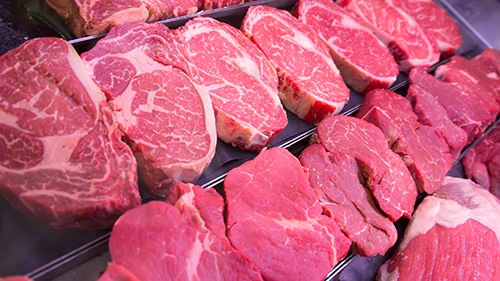Understanding Yield Grades for Value-Added Beef Producers and Marketers
Dec 27, 2022

The terms “yield grade” and “quality grade” are often, incorrectly, used interchangeably. The two terms reflect very different carcass traits. It is important for cattle producers and value-added beef entrepreneurs to understand the difference between yield and quality grades and how both are determined and used in the industry. Important to the understanding and application of yield and quality grades is the definition of beef quality, cutability, and undesirable carcass traits. This article is intended to provide definitions and explanations of what a yield grade is for cattle producers and entrepreneurs that are interested in direct marketing beef.
Yield grades
Yield grades are expressed in numbers that estimate the percentage of expected cutability from a carcass. Cutability is defined as the percentage of closely trimmed, boneless, retail cuts from the round, loin, rib, and chuck — the four major beef wholesale cuts. It is an estimate of the relative amount of lean, edible meat from a carcass.
The yield grade is determined by evaluating four carcass factors:
1. External fat thickness over the ribeye
2. Ribeye area
3. Estimate of the percentage of kidney, pelvic, and heart fat
4. Hot carcass weight
There are five yield grades: USDA yield grades 1, 2, 3, 4, and 5. The lower the numerical value of the USDA yield grade, the higher the expected yield of closely trimmed, boneless retail cuts. A yield grade 1 carcass provides the greatest amount of saleable beef, while a yield grade 5 is the lowest-yielding carcass.
Producers tend to use yield grades more than consumers. The yield grade is important to producers because it can affect animal value and the overall economic returns from the animal. Consumers are more familiar with quality grades, which are used to predict meat palatability.
Yield Grade Formula:
Yield Grade = 2.5+(2.50*Adj. Fat Thickness, inches)+(0.20*%Kidney, Pelvic and Heart)+(0.0038*Hot Carcass Wt., pounds)-(0.32*Ribeye Area, square inches)
Using the yield grade formula, what is the yield grade for a carcass that weighs 760 pounds, has an Adj. Fat Thickness of 0.50 inches fat, 2.5% KPH, and 13.2 sq. inches of REA?
YG = 2.5 + (2.50*.45) + (0.20*2.5) + (0.0038*700) - (0.32*13.2) = 2.914.
This carcass would be marketed as a YG2 because the decimals are dropped and not rounded.
A better understanding of the terms yield grade should be helpful as value-added beef producers and marketers communicate with their processor and customers. For more content like this, check out the latest issue of The Cooperator!
Yield grades
Yield grades are expressed in numbers that estimate the percentage of expected cutability from a carcass. Cutability is defined as the percentage of closely trimmed, boneless, retail cuts from the round, loin, rib, and chuck — the four major beef wholesale cuts. It is an estimate of the relative amount of lean, edible meat from a carcass.
The yield grade is determined by evaluating four carcass factors:
1. External fat thickness over the ribeye
2. Ribeye area
3. Estimate of the percentage of kidney, pelvic, and heart fat
4. Hot carcass weight
There are five yield grades: USDA yield grades 1, 2, 3, 4, and 5. The lower the numerical value of the USDA yield grade, the higher the expected yield of closely trimmed, boneless retail cuts. A yield grade 1 carcass provides the greatest amount of saleable beef, while a yield grade 5 is the lowest-yielding carcass.
Producers tend to use yield grades more than consumers. The yield grade is important to producers because it can affect animal value and the overall economic returns from the animal. Consumers are more familiar with quality grades, which are used to predict meat palatability.
Yield Grade Formula:
Yield Grade = 2.5+(2.50*Adj. Fat Thickness, inches)+(0.20*%Kidney, Pelvic and Heart)+(0.0038*Hot Carcass Wt., pounds)-(0.32*Ribeye Area, square inches)
Using the yield grade formula, what is the yield grade for a carcass that weighs 760 pounds, has an Adj. Fat Thickness of 0.50 inches fat, 2.5% KPH, and 13.2 sq. inches of REA?
YG = 2.5 + (2.50*.45) + (0.20*2.5) + (0.0038*700) - (0.32*13.2) = 2.914.
This carcass would be marketed as a YG2 because the decimals are dropped and not rounded.
A better understanding of the terms yield grade should be helpful as value-added beef producers and marketers communicate with their processor and customers. For more content like this, check out the latest issue of The Cooperator!